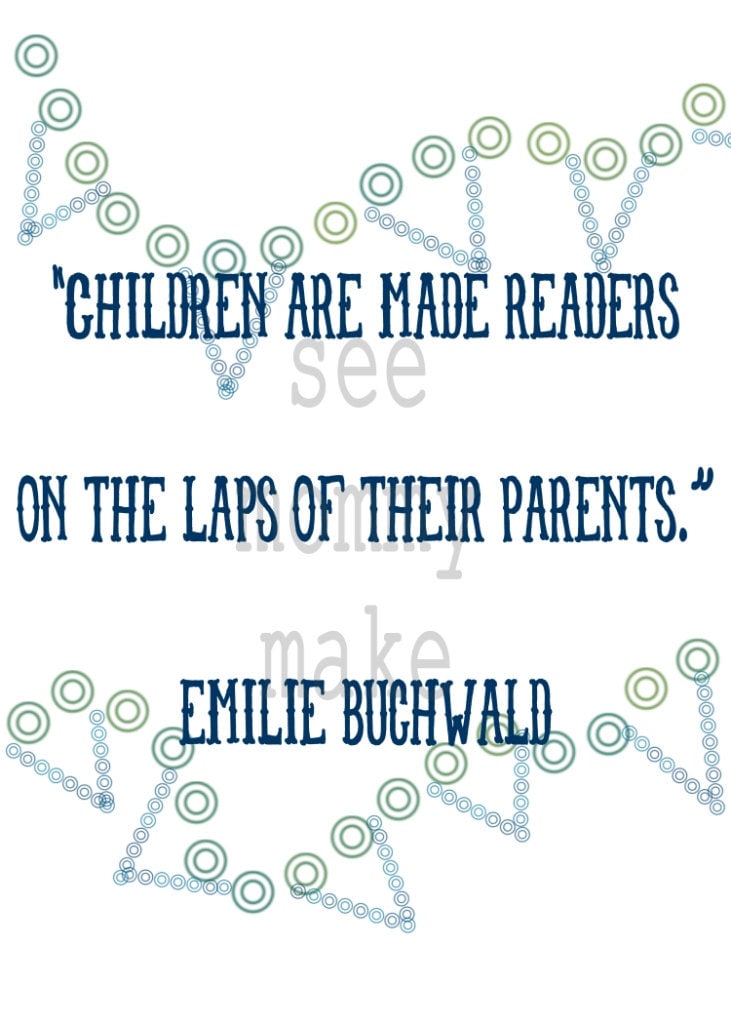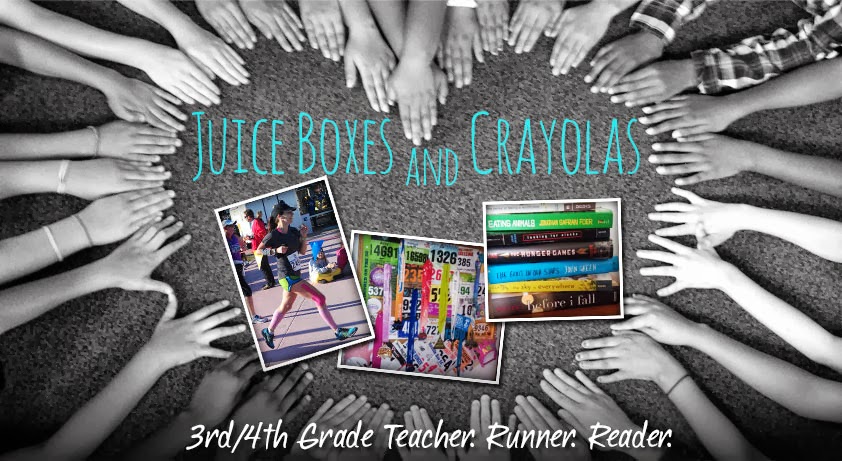“No matter the age, people are fascinated, preoccupied, consumed, fearful, enchanted, and delighted by the power of the written word. But children especially love, love the power of words and stories. And they are, so naturally, living a writer’s life. A life of observation, of wondering, of memory and imagination” (pg. 2).
I feel as though I have always been a reader and a writer. Reading and writing are so much a part of who I am and always have been—in fact, it is difficult for me to remember a time when reading and writing were not an important part of my identity. While I have had many wonderful teachers who have inspired me and pushed me to grow as a reader and writer, I know that my passion for words started before I ever entered a classroom. I recently saw a bookmark with this quote:

This quote is so true, especially for my own life. My parents made me a reader with so many of their actions. But also, children are made writers first in their own homes. I wholeheartedly believe this, so when I was given the opportunity to read and review Pam Allyn’s new book Your Child’s Writing Life, I absolutely said yes. Earlier this summer I read Allyn’s book Best Books for Boys—read my review here.
While I am not a parent, I think that Your Child’s Writing Life would be immensely helpful to parents who wish to help their children grow as writers but aren’t sure how. We all know the "secret" to raising a successful reader: read to them, read with them, read, read, and read some more. I don’t think early writing gets as much attention, both from parents and teachers. We already know that kids who grow up in text rich homes and who listen to stories and “read” with parents from a very early age are at a huge advantage academically over peers who do not share the same intense exposure. Early writing offers this same advantage. Urging readers to see that writing is not something that needs to wait until intermediate grades to be taught, Allyn cites a research study from the U.S. Department of Education’s Office of Educational Research. Allyn writes, “The researchers asserted that when we practice writing with our children from their first year onward, our little ones will do better in school, enjoy self-expression more, and be more self-reliant” (pgs. 3-4).
While I already believed in the importance of early writing before opening this book, Allyn made me even more convinced--if that’s possible! In the first chapter, she gives three main reasons why writing matters for even the littlest ones:
- “Writing fosters a child’s emotional growth.” Children are empowered when they have the opportunity to own their experiences, both positive and negative, through writing.
- “Writing helps develop critical thinking skills." Children can learn about differing perspectives when they write and tell their own stories and compare them to the stories of others.
- “Writing leads to guaranteed improvement in academic achievement." There are enormous amounts of writing on standardized tests! Students who are not practiced writers do not have the stamina to perform up to their potential on the writing sections of tests.
Similarly at home, parents can easily foster a love of writing by making writing a part of a child’s life from the very beginning. If it becomes a natural part of the everyday (more importantly, a joyous part of the everyday!), writing will never be a chore for children. Allyn writes, “As parents, our biggest job is to teach our children to fall in love with the things that will transform them, make them better students and give them the skills they need to be successful” (pg 10). As I mentioned earlier, I know that I would not be the reader and writer I am today if my parents had not fostered an early love for reading and writing in me. From my first years, I knew that these things were fun, and I read and wrote for hours upon hours. It makes sense, then, that when I started school I was already a strong reader and writer, and that I continued to grow. (Now, if only my parents had also helped me fall in love with math!!)
Once she has you convinced that encouraging a writing life for even the youngest children is of the utmost importance, Allyn then goes on to give parents a guide for how to do this in the home. She offers and explains 5 “Writing Pillars” (Stamina, Creativity, Fluency, Phonemic Awareness, and Organization), areas that we can continuously work on and develop with children. Most helpful (in my non-parent opinion!) were Allyn’s 5 Keys to “Set the Stage for Forever Writers.” These 5 Keys follow the acronym WRITE: Word Power (creating a rich vocabulary), Reading Life (reading as a means of writing coaching), Identity (personal writing style and preferences), Time (making time for writing in children’s lives), Environment (creating a writing place with your child in your home).
The chapter in which these keys are explained and those that follow are packed with simple (beautiful) ideas for “setting the stage” for your child’s writing life, including suggestions for each year from birth to age 10+. I loved these tips because they are so simple, yet can make a big difference. For example, Allyn suggests that parents create a “word jar” in which they can “collect” and store their favorite words, offer to email stories to grandma after children have finished as a means of “publishing,” taking “writing walks,” and journaling together about the school day instead of just discussing it. Additionally, towards the end of the book Allyn provides helpful suggestions for what to do when your child (as most do at some point) resists writing. I know many parents who have fought those writing homework battles (I have fought some myself while tutoring!) that would greatly appreciate this gem of a chapter!
There is so much more in this book, but I think I’ve already gotten a bit carried away! As I’ve said, I am not a parent, but I know in talking to students’ parents on a daily basis that while they may feel confident in reading with their child or drilling math facts, many parents aren’t sure where to begin when it comes to helping their child grow as a writer. This book is the perfect starting place, and I so enjoyed reading it and feeling Allyn’s own passion for literacy and writing literally dripping from every word. I plan to recommend it to my friends and family members who are new moms!
Disclaimer: I was not compensated in any way for this book review. All thoughts and opinions are my own. :)


No comments:
Post a Comment